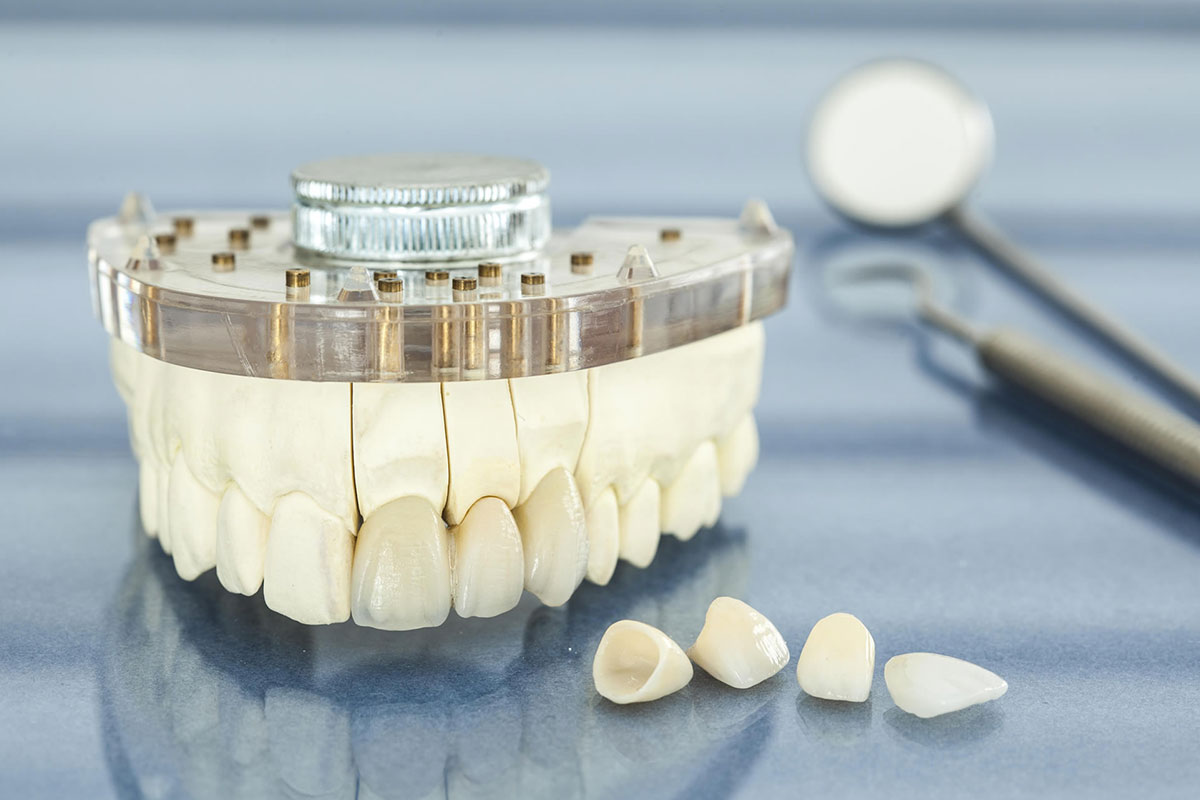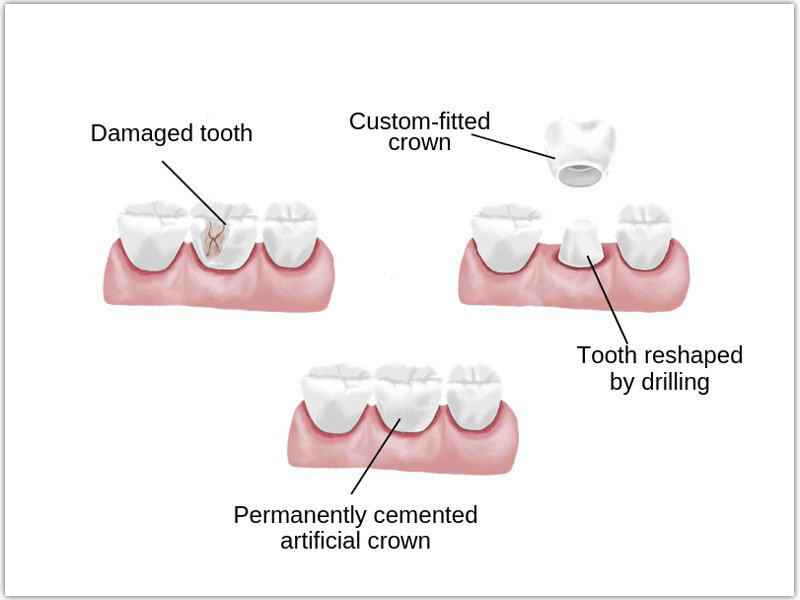Dental crowns are dental restorative caps placed on damaged, cracked, or broken teeth to restore their shape, size, form and functionality. The placement of crowns is the most common dental procedure and effectively helps uplift people’s smiles.
Dental crowns are cap-like coverings that replicate and protect the visible portion of teeth by encasing their structure above the gum line. Whether a tooth suffers damage, cosmetic issues or infection, a dental crown can effectively help restore the tooth’s appearance and function.
People need dental crowns to fix their oral irregularities, and they have multiple benefits, including:
- Dental crowns significantly repair enamel or structural damage to teeth.
- Dental crowns are placed in a simple procedure.
- Crowns help relieve discomfort.
- Crowns are custom-made.
- Crowns can restore the appearance of teeth.
- Dental crowns last for prolonged periods.
Dental crowns are fixed prosthetic devices that are permanently cemented into place on the tooth. They can also stabilize and reinforce a tooth after a root canal procedure. Moreover, dental crowns can replace worn-out fillings and also correct tooth discoloration and misalignment.
There are numerous types of dental crowns available that people can opt for, depending on their requirements, budget, and preferences. All dental crowns are manufactured in dental labs according to an impression of the patient’s bite and jaw.
The dental impression allows a technician to examine the movements of the jaw and then sculpt a crown that will appropriately fit the patient’s tooth and will function just like the natural teeth.

WHO CAN OPT FOR DENTAL CROWNS?
Patients with good oral health and who have no issues beyond cosmetic imperfections are always suitable for dental crowns. If the tooth is broken or fractured but has healthy roots, dental crowns can still restore the functionality of such teeth.
However, decayed teeth first have to be treated before the placement of dental crowns. Whether a tooth was broken by an oral injury or got damaged due to wear and tear or grinding, a crown can always be a good option.
However, minor chipped teeth can sometimes be repaired with cosmetic treatments like veneers or dental bonding, but major tooth damage always requires the placement of dental crowns.

PROCEDURE OF DENTAL CROWNS PLACEMENT:
The placement procedure of dental crowns is usually completed in two appointments.
1. TOOTH PREPARATION:
During the first visit, the dentist usually assesses the oral health of patients by going through previous dental history and also conducts an examination through digital X-rays or a series of radiographs.
Then the dentist prepares a tooth for the placement by crowns by numbing the tooth and nearby gum tissues. However, this is not always necessary, especially if the tooth nerves have already been removed, but it can make the patient more comfortable.
For the crown to fit properly, the affected tooth should have a filed-down structure on all sides. Moreover, the extent of filing mainly depends on the type of crown to be placed.
Full metal crowns are usually thinner and do not require as much enamel removal as compared to the placement of full porcelain or porcelain-fused-to-metal crowns. If a significant portion of the tooth is lost due to decay or damage, a composite material can also be used to rebuild the tooth’s structure for the crown.
2. TOOTH IMPRESSIONS:
After the teeth are filed down for the placement of dental crowns, the dentist will take impressions of the patient’s bite. Impressions are generally taken with a putty-like material that the patient bites into.
Then these tooth impressions are sent to a dental lab that will fabricate the custom-made crowns. A shade guide will be used to ensure that the dental crown blends in well with the patient’s original teeth colour.
Before the crown is ready, the dentist will place a temporary crown manufactured from resin or metal material over the tooth. This temporary crown protects the tooth from damage and will be removed when it is time to place the permanent crowns.
Patients need to be more careful while wearing temporary crowns because they are less stable. Dentists usually recommend patients to avoid hard and sticky foods and chewing from the affected side of the mouth during this period.
3. PLACEMENT OF FINAL CROWN:
At the second visit, the dentist will place the newly fabricated permanent crowns on your teeth. During the placement procedure, the temporary crown is removed, and the colour, size, and fit of permanent crowns are checked.
If everything is suitable, then the dentist will place the permanent crowns on the damaged teeth with the help of a local anaesthetic in order to numb the tooth. After the procedure is completed, dentists usually provide their patients with aftercare and maintenance instructions so that the crowns can last for a long time without causing any issues.
In the first week after the placement of dental crowns, patients usually feel slight discomfort, mild pain or sensitivity while eating hot and cold food items, but these are temporary side effects and fade away on their own or with the use of medications.
ESTIMATED COSTS OF DENTAL CROWNS:
The approximate costs of dental crowns vary greatly based on several factors, including the type or quality of crowns, the material of crowns, and your location. However, on average, dental crowns can cost a person from $1000 to $2500 per tooth.
Sometimes, dental insurance also covers a specific portion of dental crown costs. Some dental clinics in London Ontario also offer different payment plans to make dental restorative procedures budget-friendly and provide convenience to people.











